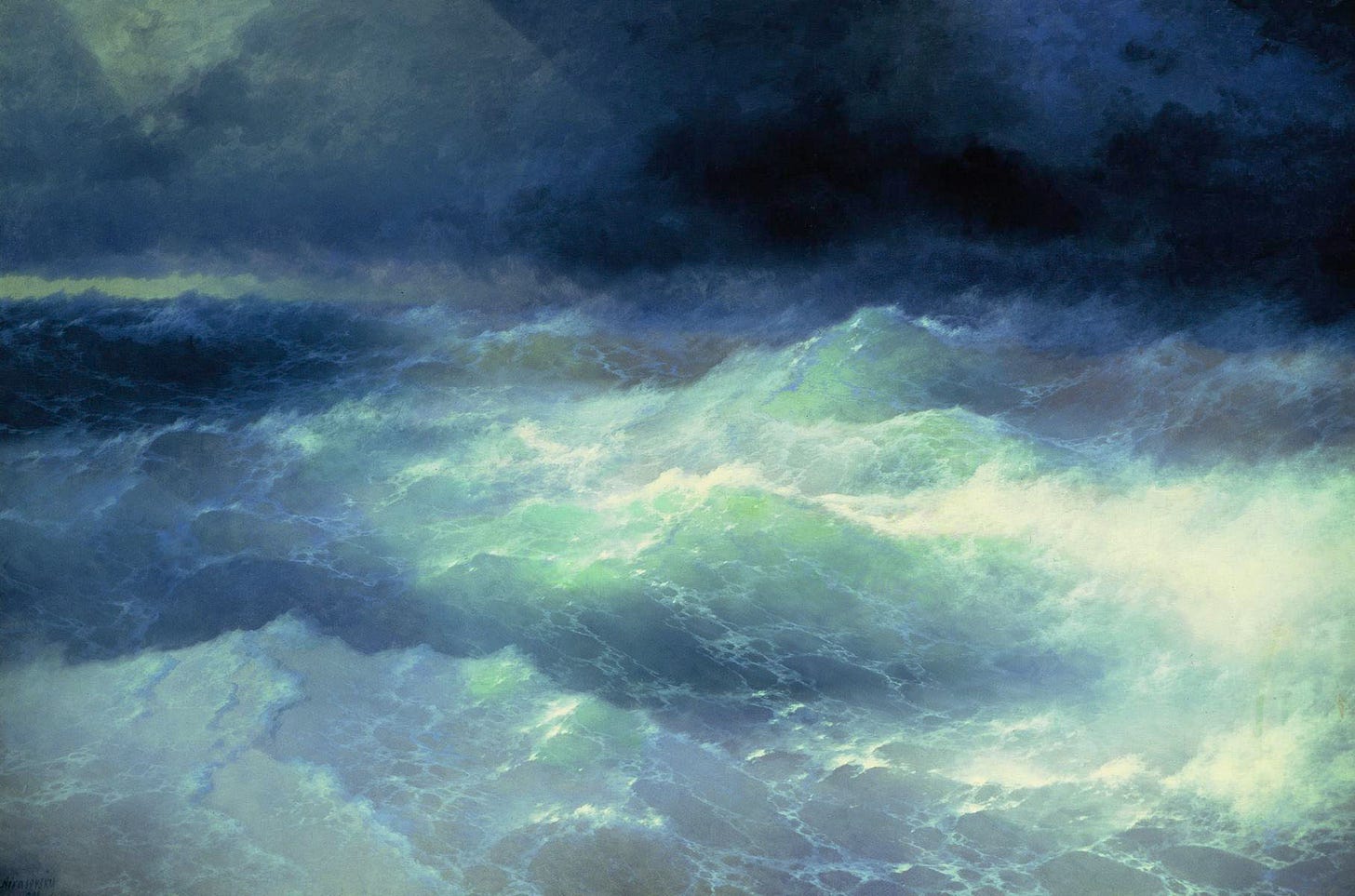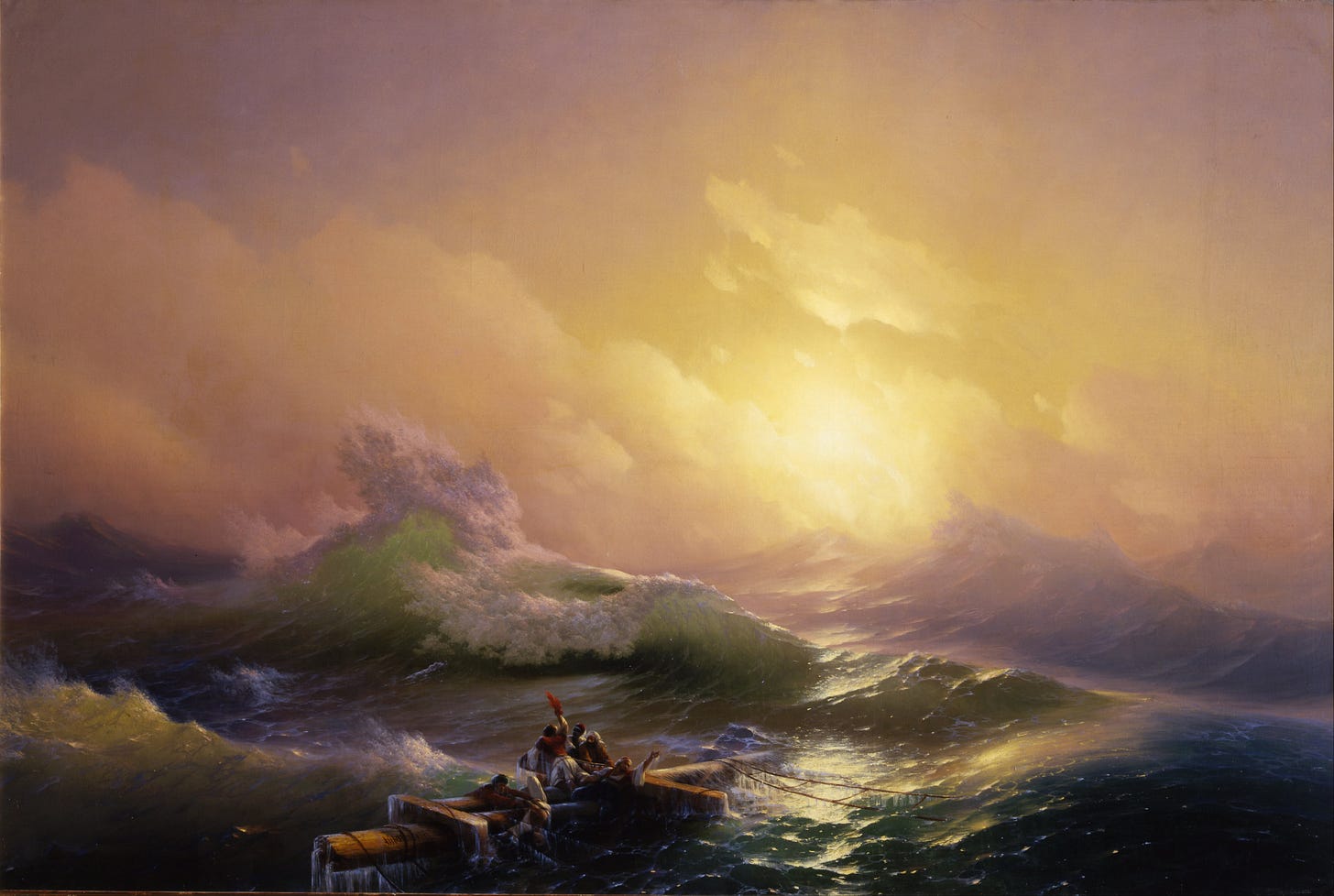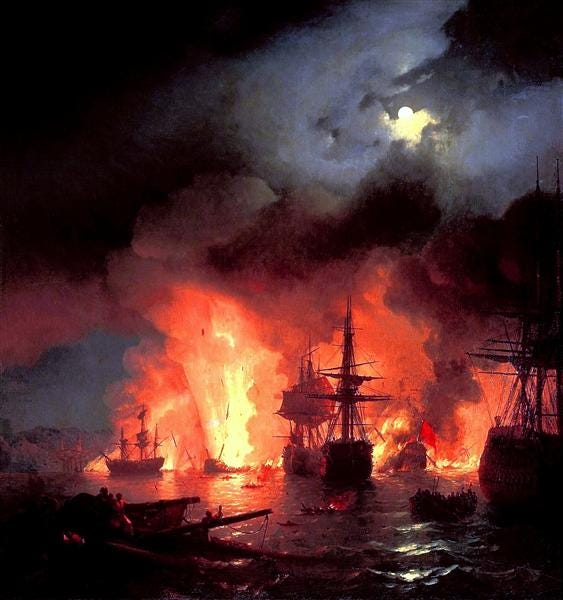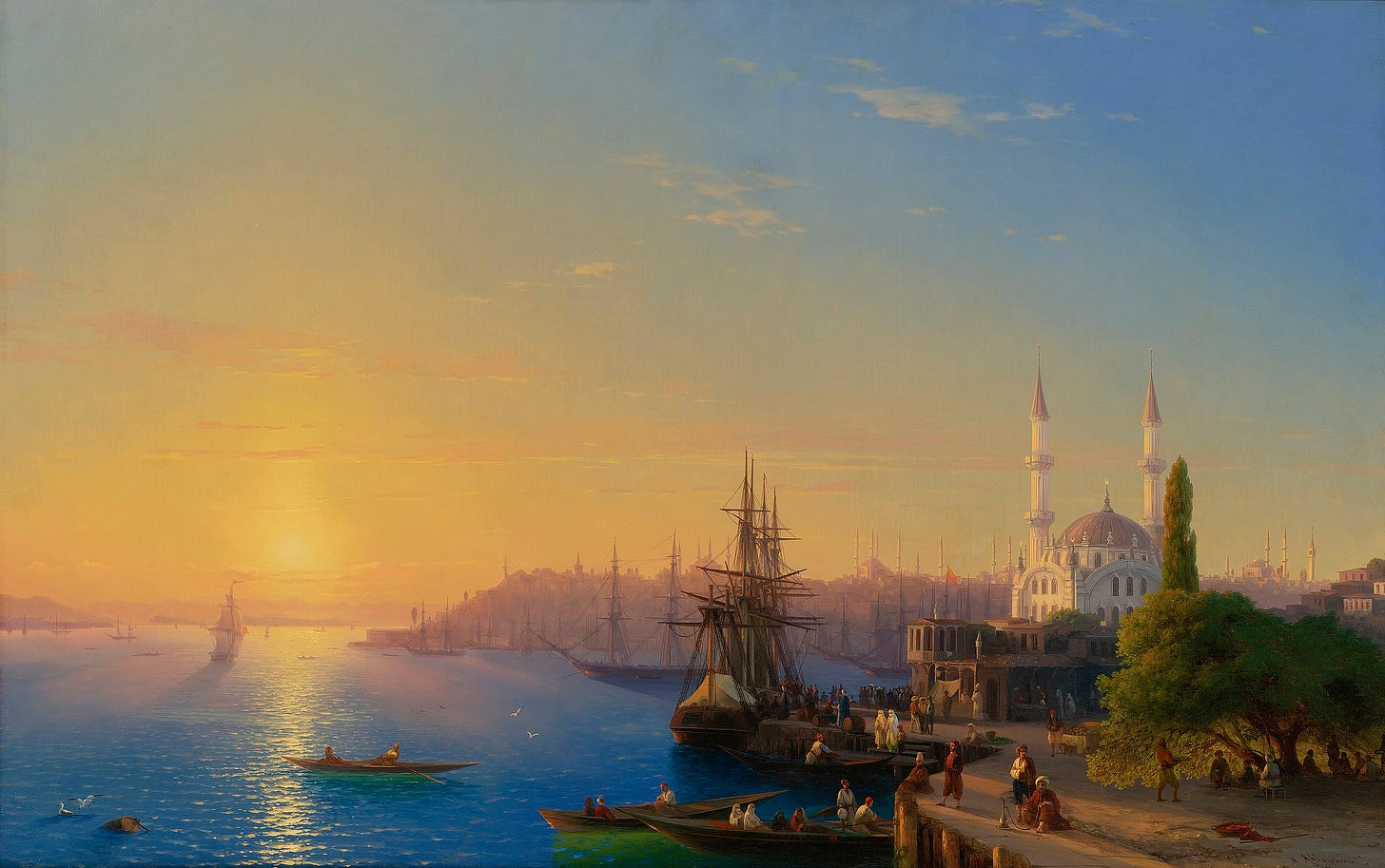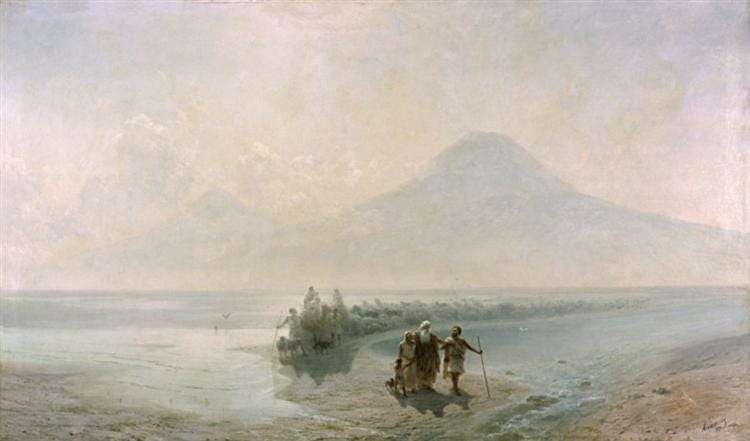Painting the Infinite with Ivan Aivazovsky
Salt-Stained Sublime: A Master of Light and Water
Hello, Dear Reader
Imagine standing before a canvas where you can almost hear the crash of waves, feel the salt spray on your face, and sense the fleeting dance of light across turbulent waters.
This is the world of Ivan Aivazovsky, the 19th-century Russian Romantic painter whose mastery of seascapes transformed the way we perceive the ocean’s beauty and terror. His works are symphonies of light, movement, and emotion, capturing the eternal dialogue between man and nature.
Aivazovsky reminds us of the sublime power of the natural world—a power that could inspire awe and humility in equal measure.
Let’s dive into the life and art of this unparalleled artist, whose brush conjured oceans that still captivate us today.
A Life Shaped by the Sea
Born on July 29, 1817, in Feodosia, a port city on the Crimean coast of the Black Sea, Ivan Konstantinovich Aivazovsky (originally Hovhannes Aivazian) was destined to be entwined with the sea. His Armenian family, though impoverished by the time of his birth, lived in a bustling maritime hub, where the rhythms of waves and the comings and goings of ships were part of daily life. His talent for drawing emerged early—sketching ships and coastlines with precocity that caught the attention of local patrons.
By his teens, he was admitted to the Imperial Academy of Arts in St. Petersburg.
Training under landscape painter Maxim Vorobyov honed his technical prowess, but it was his travels in Italy, France, and beyond, that shaped his artistic soul.
In Italy, he absorbed the Romantic emphasis on emotion and nature, studying masters like J.M.W. Turner.
By 1844, he became the official artist of the Russian Navy, gaining unparalleled access to the sea and its dramas.
The Alchemy of Light and Water
Aivazovsky’s genius lay in his ability to make light and water pulse with life.
His seascapes shimmer, churn and breathe. In The Ninth Wave (1850), a handful of shipwrecked sailors cling to debris beneath a sky torn between darkness and dawn. The towering waves and glimmering golden light symbolize both devastation and hope.
He understood light’s transformative power, painting not just the sea, but how light refracts, scatters, and glows.
Works like Stormy Sea at Night (1849) and The Black Sea (1881) reveal seas as living forces, mirrors of both heaven and hell. His palette is nuanced and evocative, fused silvers, golds, greens, and blues with breathtaking subtlety.
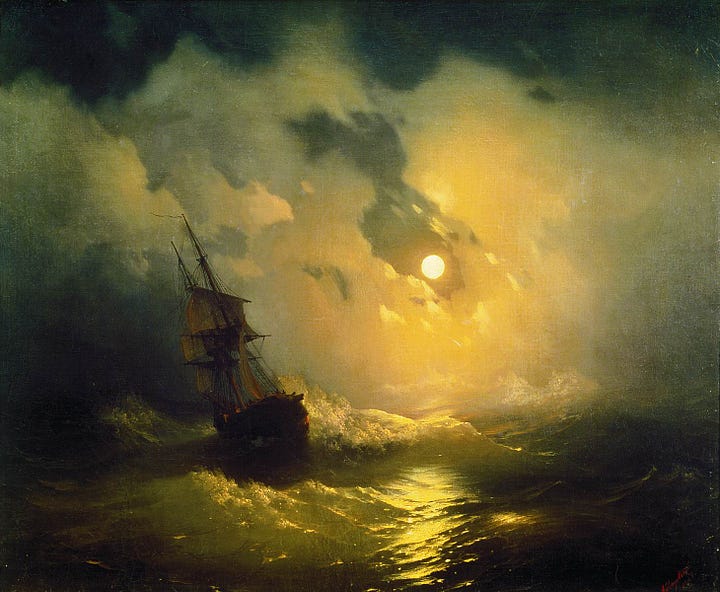
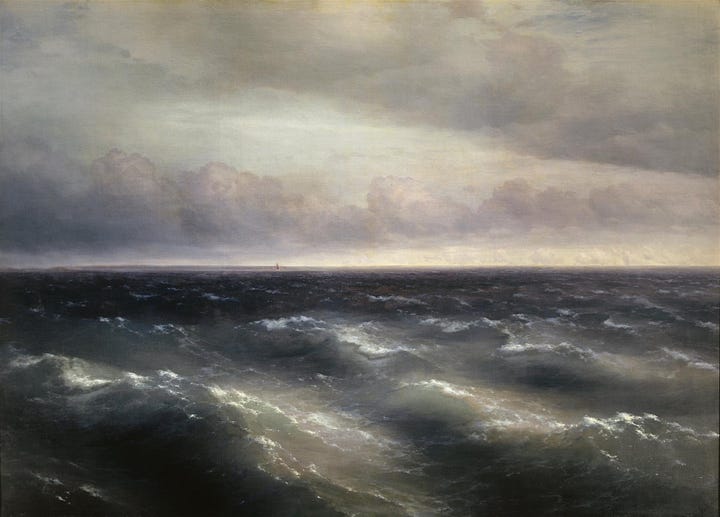
A Romantic Vision in a Changing World
Deeply rooted in Romanticism, his work celebrated nature’s sublime beauty and humanity’s emotional depth. While Europe industrialized, he reminded viewers of nature’s untamed mystery. His paintings meditate on humanity’s place in the cosmos, where the vast sea mirrors the vast soul. Despite his poetic sensibility, he was grounded in observation.
Cultural Canvas is a reader-supported publication. Every like, comment, share, and donation helps us grow—your support truly matters!
His time with the Russian Navy gave him firsthand experience with naval battles and storms. Battle of Cesme at Night (1848) dramatizes a historic naval victory with striking precision and intensity.
Of his estimated 6,500 works, roughly 6,000 are seascapes, yet Aivazovsky wasn’t confined to one genre. He painted landscapes, historical scenes, and even portraits. View of Constantinople and the Bosphorus (1856) captures the Turkish city with his trademark luminosity.
Aivazovsky established an art school and gallery in Feodosia and supported infrastructure projects, including schools and a railway.
His Armenian heritage deeply influenced his work, reflected in pieces like Dejection of Noah from mountain Ararat (1889).
A Global Resonance
Aivazovsky’s art crossed borders and captivated audiences across Europe and America. His exhibitions in Paris, London, and New York attracted admirers ranging from tsars to industrialists.
His seascapes transcend time, resonating with anyone who has stood before the ocean in awe.
Paintings like Morning on the Sea (1889) or The Deluge (1864) are portals into contemplation and connection.
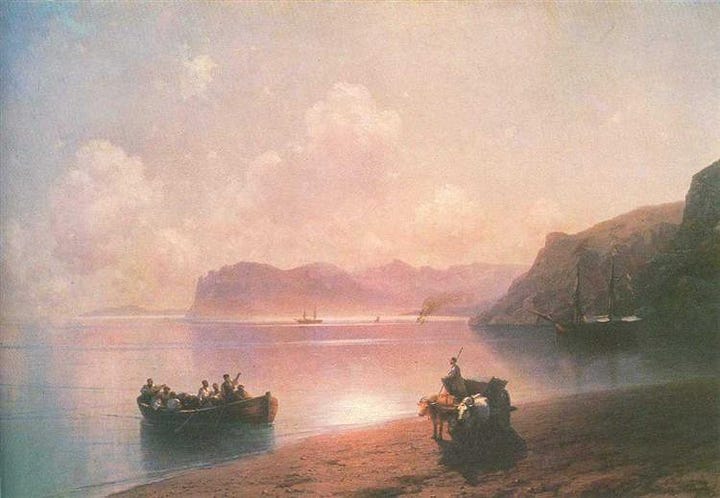
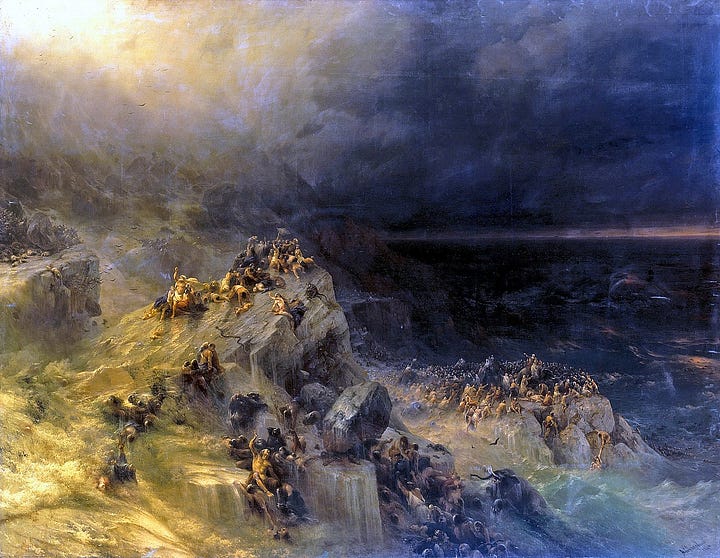
Aivazovsky’s legacy lies not just in his art but in how he taught us to see: with reverence, humility, and a longing for the sublime.
In an era dominated by digital media, Aivazovsky reminds us of the power of traditional painting to evoke deep emotion.
His seas are metaphors for life, its tempests, calms, and moments of wonder.
Missed our last story? Read it here↓
Don’t miss the newest episode of our podcast!
Thank you for being part of Cultural Canvas! If you love what we do, consider supporting us to keep it free for everyone. Stay inspired and see you in the next post!


